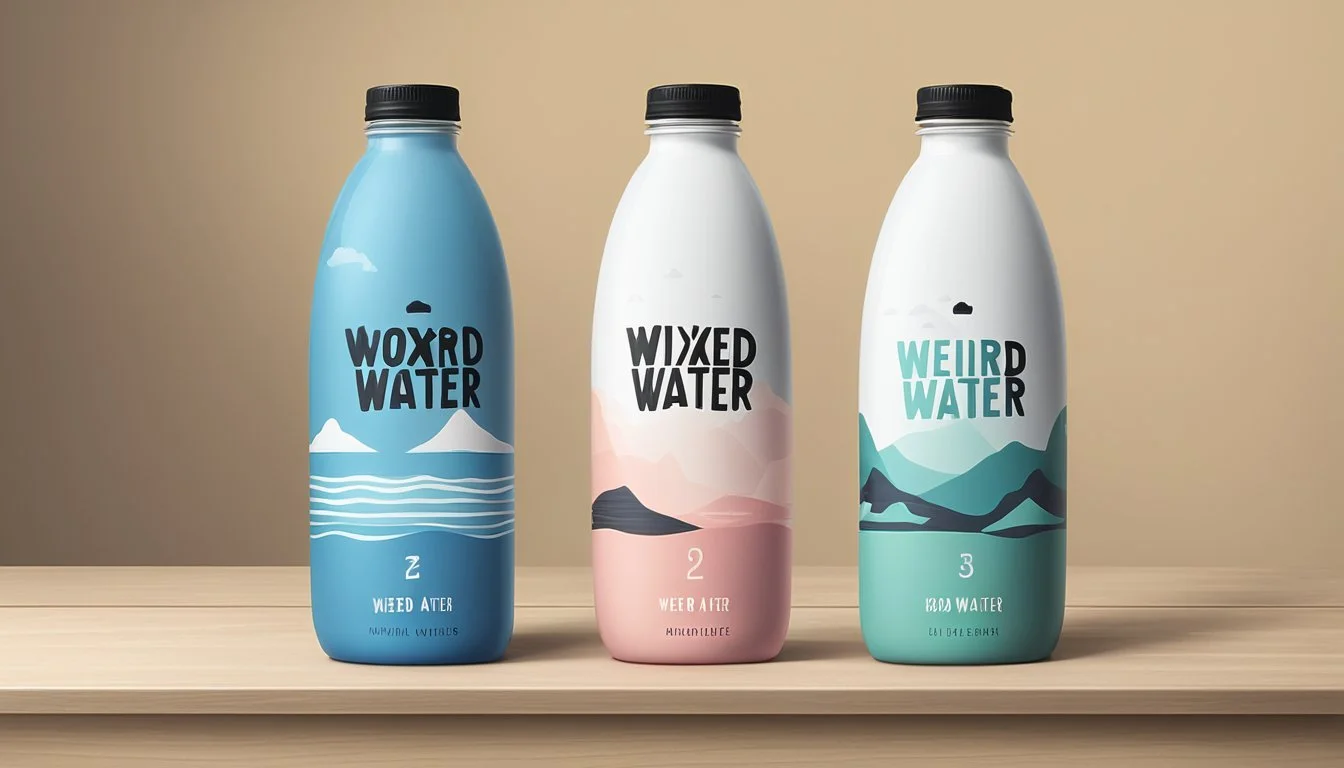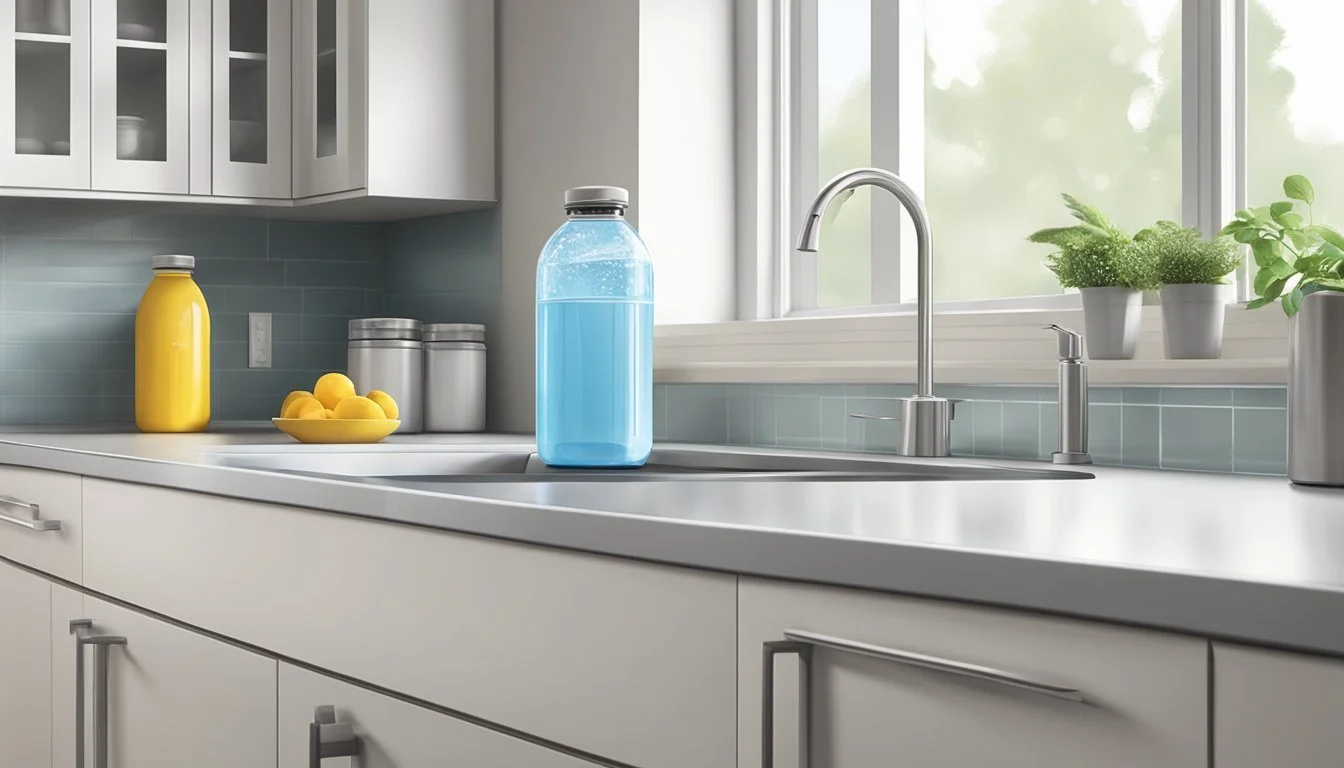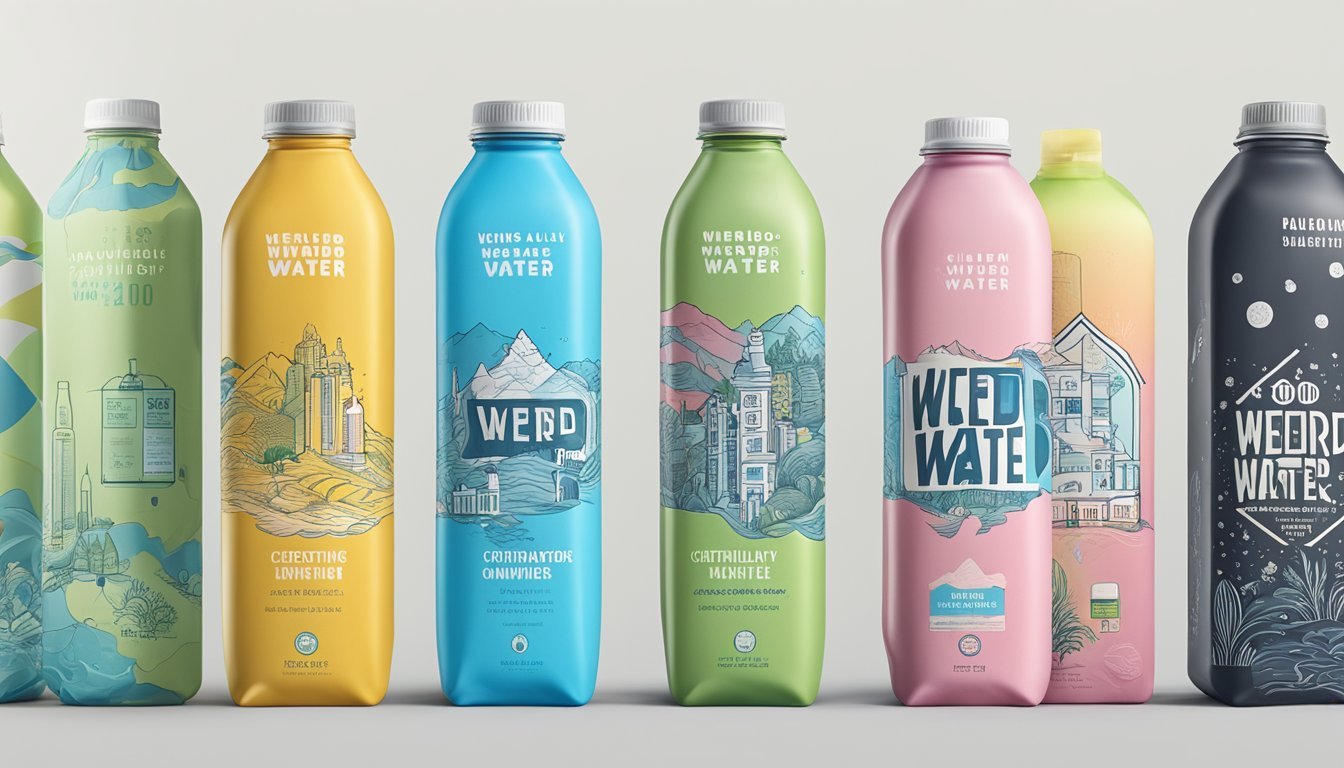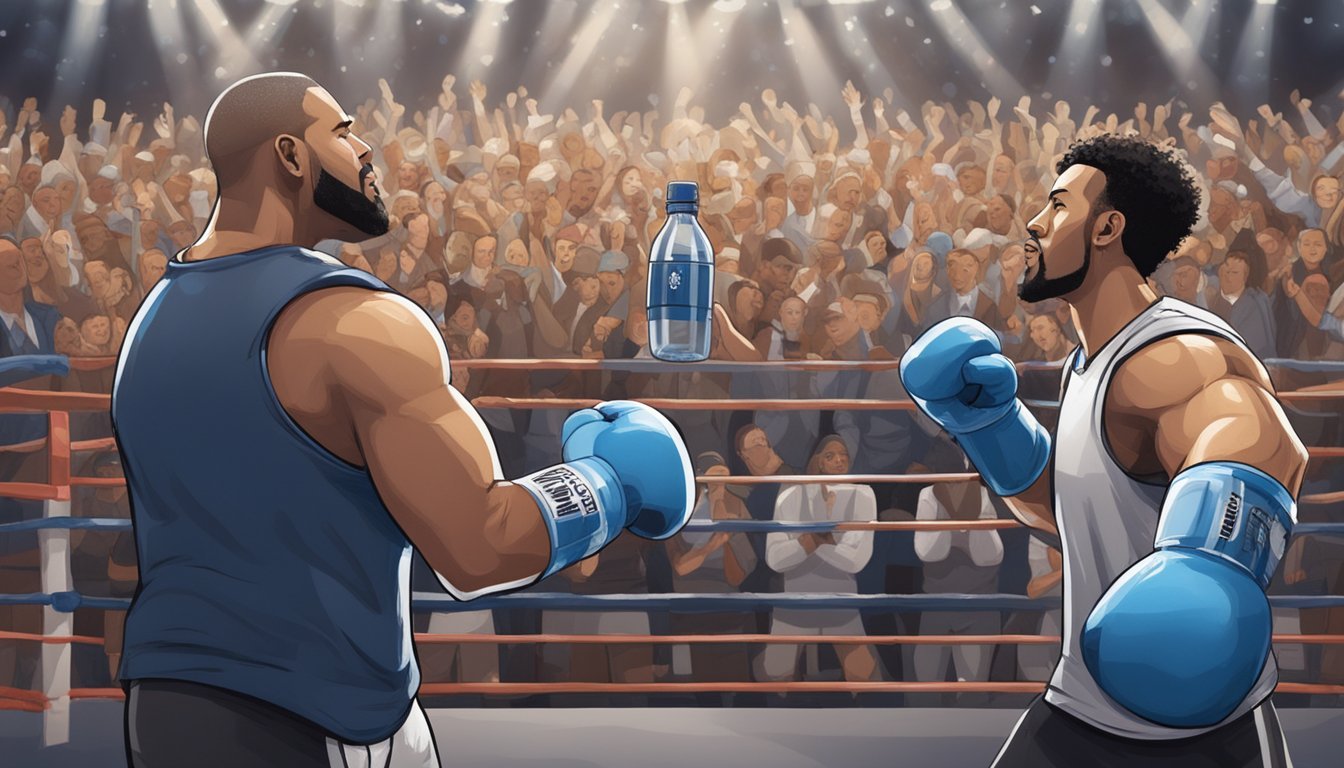Boxed Water vs. Weird Water
Comparing Bottled Water Options
In the ever-evolving world of bottled water, new players like Boxed Water and Weird Water are challenging traditional brands with eco-friendly packaging and sustainability claims. Boxed Water, established in 2009, offers water encased in cartons made from sustainable paper, aluminum, and plastic, aiming to reduce the environmental impact of plastic bottles. Boxed Water's paper-based packaging is designed to minimize its carbon footprint and environmental impact, making it a compelling option for environmentally conscious consumers.
Weird Water, on the other hand, takes a different approach by emphasizing innovative flavors and unique branding to capture consumer attention. This company focuses on creating a distinct drinking experience while still contributing to the sustainability movement. Both brands strive to stand out in a crowded market by promoting their commitment to reducing environmental harm.
For those prioritizing the health of the planet, the choice between Boxed Water and Weird Water may come down to their respective contributions to sustainability. Boxed Water's efforts in using renewable resources and recyclable materials make it a strong contender. Meanwhile, Weird Water appeals to those looking for a refreshing and distinctive taste experience. Ultimately, the choice depends on what consumers value more: environmental sustainability or a unique, flavorful drinking experience.
Understanding Boxed and Bottled Water
Boxed water is becoming a significant player in the bottled water market, mainly due to its eco-friendly packaging and sustainable practices. Meanwhile, bottled water has evolved over time with a strong presence and varying designs.
The Emergence of Boxed Water
Boxed water emerged as an alternative to traditional plastic bottles. Brands like Boxed Water Is Better have innovated by using cartons made from 92% plant-based materials. This includes a mix of sustainable paper sourced from sustainable forests, aluminum, and plastic film to keep the water fresh and waterproof.
These cartons are promoted as an eco-friendly alternative due to their lower carbon footprint compared to plastic bottles. Their design, reminiscent of a milk carton, also stands out and appeals to environmentally conscious consumers. The goal is to reduce plastic waste and offer a product with a smaller environmental impact.
Evolution of Bottled Water
Bottled water has been a staple in the beverage industry, with brands like Poland Spring leading the market for years. Over time, companies have diversified designs and offerings, ranging from basic plastic bottles to more premium, glass options.
However, the environmental impact of plastic bottles has raised concerns. Companies are now exploring sustainability through recycled materials and alternative packaging designs. The rise of boxed water options highlights the industry's shift toward reducing plastic use and exploring more sustainable packaging methods.
In essence, the bottled water sector continues to adapt and innovate, responding to consumer demand for both convenience and sustainability.
Material Comparison and Environmental Implications
Boxed Water and Weird Water have distinct packaging materials, each with unique environmental impacts. These materials influence recyclability, sustainability, and the ecological footprint of both products.
Plastic Bottles Versus Paper Cartons
Boxed Water uses cartons made from 74% paper, 1% aluminum, and 25% plastic film, emphasizing the use of paper-based and renewable materials.
Weird Water likely uses PET plastic bottles, which are more common in the industry.
While plastic bottles can be recycled, their chemical composition and plastic pollution impact are significant concerns. Paper cartons, although incorporating some plastic and aluminum, aim to reduce reliance on non-renewable resources and have a lesser impact on plastic pollution.
Recyclable Materials in Packaging
Boxed Water's cartons are designed to be fully recyclable. The paper component is sustainable and can be processed more efficiently in recycling streams. The small amount of aluminum and plastic film, though necessary for sealing and waterproofing, are also recyclable but may require specialized facilities.
Weird Water's PET bottles are also recyclable, but the effectiveness of this depends greatly on local recycling infrastructure and consumer behavior. PET recycling is feasible but often less efficient compared to the recycling of paper materials.
The Reality of Recycling
Recycling rates for Boxed Water and Weird Water differ significantly based on material and infrastructure.
Paper cartons, while recyclable, often face contamination issues that can hinder the recycling process. Specialized facilities are needed to separate the paper from plastic and aluminum.
PET bottles from Weird Water are more universally accepted in recycling programs. However, actual recycling rates for plastic are lower due to logistical challenges and contamination. This means a significant portion of PET plastic might still end up in landfills or contributing to plastic pollution.
Understanding these differences can help consumers make informed choices based on the environmental impact of the packaging materials used by Boxed Water and Weird Water.
Health and Safety Concerns
When choosing bottled water, health and safety are critical factors. Concerns such as BPA and microplastics contamination, as well as the taste and purity of water, weigh heavily on decision-making.
BPA and Microplastics
Plastic bottles are a common source of Bisphenol A (BPA). BPA is an industrial chemical used in the production of certain plastics and resins, and it can leach into water, especially when bottles are exposed to heat. BPA has been linked to various health concerns such as hormonal disruptions and other potential risks.
Boxed Water, on the other hand, utilizes packaging made mostly from paper, reducing the risk of BPA contamination. Just Water also emphasizes a bio-plastic cap that is BPA-free, further mitigating this concern.
Microplastics are tiny plastic particles that have been found in many bottled water brands. These particles can originate from the degradation of plastic bottles over time. Consuming microplastics is a significant health concern due to potential toxicological impacts.
Using cartons, Boxed Water and Just Water significantly reduce the likelihood of microplastic contamination, offering a safer alternative to traditional plastic bottles.
Taste and Purity of Water
Taste and purity are vital for bottled water consumers. Tap water varies in taste and quality based on geographic location and local treatment methods. Contaminants such as chlorine and fluoride can affect the flavor.
Purified water, often used in bottled water, undergoes various processes like reverse osmosis or distillation to remove impurities. These methods can improve taste and ensure higher purity standards compared to regular tap water.
Boxed Water and Just Water claim to deliver clean, fresh-tasting water. Carton packaging can preserve flavor better than plastic bottles, which might impart a plastic taste to the water.
Consumer Reports have indicated concerns regarding the presence of PFAS chemicals in some bottled waters. However, both Boxed Water and Just Water strive to ensure their products are free from such contaminants, maintaining a high standard of purity and taste.
Design and Convenience Factors
Design and convenience play a crucial role in the overall consumer experience for bottled water. The aesthetic appeal and the practicality of the packaging influence purchasing decisions significantly.
Aesthetic and Branding
Boxed Water emphasizes a minimalist design, using clean lines and monochromatic color schemes. The cartons prominently feature the brand's name and environmental messaging, establishing an eco-friendly image. This design appeals to environmentally-conscious consumers looking for a product that aligns with their values.
Weird Water, on the other hand, takes a more unconventional approach. Their bottles are vibrant, with quirky illustrations that stand out on store shelves. This bold design targets a younger demographic, aiming to capture the attention of those who favor unique and eye-catching packaging.
Both brands use their packaging not only to protect the water but also to communicate their brand identities effectively.
Practicality for Consumption
Boxed Water utilizes cartons made from 74% paper, 1% aluminum, and 25% plastic film. This blend ensures the package is both durable and lightweight. The rectangular shape makes it easy to stack and store, both for retailers and consumers. The carton also includes a resealable cap, enhancing its convenience for on-the-go use.
Weird Water focuses on a user-friendly bottle design. The ergonomic shape fits comfortably in hand, making it easier to carry during activities. The bottle's material is slightly squeezable, allowing for controlled pouring. It also features a wide-mouth opening, suitable for adding ice or fruit, which adds to its versatility.
Each brand’s focus on different aspects of convenience highlights their understanding of consumer needs and usage contexts.
Sustainability Initiatives and Certifications
Boxed Water and Weird Water take different approaches in their sustainability initiatives and certifications. Both aim to reduce environmental impact but follow unique paths in reaching their eco-friendly goals.
Corporate Responsibility
Boxed Water emphasizes its commitment to sustainability by using paper-based packaging made from 74% paper, 1% aluminum, and 25% plastic. This blend ensures waterproofing while maintaining a low environmental impact. They have partnered with the National Forest Foundation and Ocean Blue Project to plant trees and support ocean clean-up efforts.
Weird Water focuses on using recyclable aluminum cans, which have a lower carbon footprint compared to single-use plastic bottles. The mining and smelting process of aluminum is less harmful to the atmosphere. They collaborate with 1% for the Planet, donating a portion of sales to environmental causes and initiatives.
Third-Party Endorsements
Boxed Water holds several certifications that validate its sustainability claims. The company’s packages are FSC-certified, ensuring that the paper is sourced from responsibly managed forests. They're also recognized for reducing greenhouse gas emissions through the use of renewable materials.
Weird Water has earned endorsements from reputable organizations like the Food Network, which commended their efforts in minimizing plastic waste. Their packaging also boasts the Cradle to Cradle certification, reflecting its effectiveness in reducing carbon footprint and promoting recycling.
Both brands actively avoid greenwashing by maintaining transparent practices and engaging in verified environmental efforts. They seek to create a tangible impact, be it through forest conservation, reducing ocean pollution, or supporting renewable resources.
Consumer Perceptions and Market Trends
Consumer preferences have shifted towards more sustainable and health-conscious choices in the beverage industry. Innovations in packaging and distribution methods are crucial for brands to maintain relevance and loyalty.
Brand Loyalties and Cultural Shifts
Consumer loyalty plays a significant role in the bottled water market. Boxed Water has attracted environmentally conscious consumers by using 92% plant-based materials in their packaging.
In contrast, traditional bottled water brands often use 100% recyclable PET #1 plastic. However, the growing awareness of plastic pollution has led to a cultural shift, with more consumers favoring brands that offer eco-friendly alternatives.
This shift is evident in the increased market share for products packaged in milk cartons, glass bottles, and aluminum cans. Brands leveraging sustainable sourcing, such as sustainable forests, resonate more with today's consumers.
Innovations in the Beverage Industry
The beverage industry is continually evolving to meet consumer demands for sustainability. Boxed Water is an example of innovation, prioritizing eco-friendly packaging to reduce plastic waste. Its use of plant-based materials sets it apart from traditional bottled water.
Distribution methods are also evolving with a focus on minimizing environmental impact. Using lighter materials for packaging reduces transportation emissions and costs. Innovations like aluminum cans and glass bottles are not only seen as more sustainable but also offer a different consumer experience.
These advancements demonstrate a broader trend within the industry, emphasizing the importance of sustainability and health consciousness in influencing consumer purchasing decisions.
Strategic Alliances and Partnerships
Boxed Water and Weird Water have pursued strategic partnerships to bolster their environmental and market positions. These collaborations range from working with airlines and food services to partnerships with environmental organizations.
Collaboration with Airlines and Food Services
Boxed Water has formed key partnerships with several airlines, including Alaska Airlines. This collaboration places Boxed Water cartons on flights, helping to reduce plastic usage in the skies. The paper-based cartons, which include plant-based plastic, further the reduction of environmental impact.
Weird Water, too, has entered the food services industry, supplying boxed water to restaurants and cafes. Such partnerships are crucial in reducing the reliance on traditional plastic bottles. The emphasis is on convenience and sustainability, ensuring customers receive eco-friendly options.
Support from Environmental Organizations
Boxed Water actively partners with organizations like the National Forest Foundation and Ocean Blue Project. These collaborations focus on reforestation and ocean clean-up efforts. Boxed Water's commitment includes funding tree planting projects and supporting various water relief foundations.
Weird Water has joined hands with fish conservation projects and other LCA (Life Cycle Assessment) focused initiatives. This involves contributions towards preserving aquatic ecosystems and reducing pollutants that harm marine life. Their work with ocean-related foundations underscores a dedication to sustainable water practices.
Packaging and Distribution Impact
Packaging and distribution play crucial roles in evaluating the environmental footprint of boxed water and Weird Water. Factors like packaging materials and shipping logistics significantly impact their carbon footprint and overall environmental impact.
Global Shipping and Logistics
The transportation of packaged water has a significant carbon footprint, particularly when it involves international shipping. Boxed Water and Weird Water must consider the emissions from shipping over long distances.
Boxed Water, packaged primarily in paper with some plastic film, is lighter than traditional plastic bottles and aluminum cans. This can result in lower shipping emissions due to reduced weight. Weird Water, depending on its packaging and origin, might have a heavier impact if it uses solid plastics or metals.
Distribution efficiency is also vital. Efficient logistics can reduce carbon emissions. Having a streamlined distribution network, including centralized distribution centers, can help minimize the environmental impact by reducing unnecessary transportation steps.
Local versus International
Local packaging and distribution have distinct advantages. Products sourced and distributed locally reduce travel distances, cutting down on emissions. For both Boxed Water and Weird Water, sourcing materials locally and distributing regionally can dramatically reduce their carbon footprint compared to international shipping.
International distribution, on the other hand, often involves longer travel routes and multiple transportation methods (air, sea, and land), which increase emissions. For consumers, it’s beneficial to choose products that prioritize local sourcing and distribution. This reduces the need for extensive international logistics, benefiting the environment by lowering the overall carbon output.
Alternatives to Boxed and Bottled Water
Exploring alternatives like reusable and refillable solutions and advancements in filtration technology can offer sustainable options to traditional boxed and bottled water.
Reusable and Refillable Solutions
Switching to reusable water bottles can greatly reduce waste. Stainless steel and glass bottles are popular choices due to their durability and low environmental impact.
Stainless steel bottles are lightweight and insulate drinks well, keeping water cold for hours. Glass bottles don’t retain flavors or odors and are free from chemicals like BPA found in some plastics.
Using tap water with these reusable bottles is convenient and eco-friendly. Many cities provide high-quality tap water, making it a sustainable choice for everyday hydration.
Canned water is another interesting alternative. Usually made of aluminum, it is highly recyclable and doesn't degrade in quality as plastic does.
Advancements in Filtration Technology
Home water filtration systems have advanced significantly, offering clean and safe drinking water right from the tap. Reverse osmosis and activated carbon filters are two leading technologies.
Reverse osmosis systems remove contaminants by forcing water through a semipermeable membrane. This method is highly effective at purifying water but can be a bit wasteful in terms of water usage.
Activated carbon filters absorb impurities and are often found in pitchers or faucet attachments, providing an easy way to improve tap water quality.
For those on the go, portable water filters and filtered water bottles offer clean water without needing to buy single-use bottles. These devices are ideal for hiking, traveling, or any situation where water quality is uncertain.






